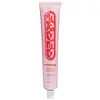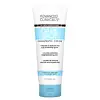What's inside
What's inside
 Key Ingredients
Key Ingredients

 Benefits
Benefits

 Concerns
Concerns

 Ingredients Side-by-side
Ingredients Side-by-side

Water
Skin ConditioningCaprylic/Capric Triglyceride
MaskingGlycerin
HumectantNiacinamide
SmoothingButyrospermum Parkii Butter
Skin ConditioningTranexamic Acid
AstringentGlyceryl Stearate
EmollientArbutin
AntioxidantSimmondsia Chinensis Seed Oil
EmollientBehenyl Alcohol
EmollientGlyceryl Behenate
EmollientKojic Acid
AntioxidantOxidized Glutathione
EmollientPhenoxyethanol
PreservativeCeteareth-20
CleansingLecithin
EmollientSclerotium Gum
Emulsion StabilisingZinc Ricinoleate
Arginine Hcl
Skin ConditioningAzelaic Acid
BufferingSqualane
EmollientCeteareth-12
EmulsifyingCetearyl Alcohol
EmollientCetyl Palmitate
EmollientTetrahydroxypropyl Ethylenediamine
Curcuma Longa Callus Extract
Skin ProtectingSodium Lauroyl Sarcosinate
CleansingTrisodium Ethylenediamine Disuccinate
Phytic Acid
Allantoin
Skin ConditioningDimethylmethoxy Chromanyl Palmitate
Skin ConditioningEthylhexylglycerin
Skin ConditioningCentella Asiatica Leaf Extract
Skin ConditioningMelatonin
AntioxidantGlycyrrhiza Glabra Root Extract
BleachingWater, Caprylic/Capric Triglyceride, Glycerin, Niacinamide, Butyrospermum Parkii Butter, Tranexamic Acid, Glyceryl Stearate, Arbutin, Simmondsia Chinensis Seed Oil, Behenyl Alcohol, Glyceryl Behenate, Kojic Acid, Oxidized Glutathione, Phenoxyethanol, Ceteareth-20, Lecithin, Sclerotium Gum, Zinc Ricinoleate, Arginine Hcl, Azelaic Acid, Squalane, Ceteareth-12, Cetearyl Alcohol, Cetyl Palmitate, Tetrahydroxypropyl Ethylenediamine, Curcuma Longa Callus Extract, Sodium Lauroyl Sarcosinate, Trisodium Ethylenediamine Disuccinate, Phytic Acid, Allantoin, Dimethylmethoxy Chromanyl Palmitate, Ethylhexylglycerin, Centella Asiatica Leaf Extract, Melatonin, Glycyrrhiza Glabra Root Extract
Aloe Barbadensis Leaf Juice
Skin ConditioningStearic Acid
CleansingGlycerin
HumectantGlyceryl Stearate Se
EmulsifyingCocos Nucifera Oil
MaskingGlyceryl Stearate
EmollientPEG-100 Stearate
Beeswax
Emulsion StabilisingBehenyl Alcohol
EmollientCetyl Alcohol
EmollientAminopropyl Ascorbyl Phosphate
AntioxidantDipotassium Glycyrrhizate
HumectantSimmondsia Chinensis Seed Oil
EmollientButyrospermum Parkii Butter
Skin ConditioningCetearyl Dimethicone
EmollientXanthan Gum
EmulsifyingDisodium EDTA
Sodium Hydroxide
BufferingParfum
MaskingEthylhexylglycerin
Skin ConditioningCaprylyl Glycol
EmollientHexylene Glycol
EmulsifyingPhenoxyethanol
PreservativeAloe Barbadensis Leaf Juice, Stearic Acid, Glycerin, Glyceryl Stearate Se, Cocos Nucifera Oil, Glyceryl Stearate, PEG-100 Stearate, Beeswax, Behenyl Alcohol, Cetyl Alcohol, Aminopropyl Ascorbyl Phosphate, Dipotassium Glycyrrhizate, Simmondsia Chinensis Seed Oil, Butyrospermum Parkii Butter, Cetearyl Dimethicone, Xanthan Gum, Disodium EDTA, Sodium Hydroxide, Parfum, Ethylhexylglycerin, Caprylyl Glycol, Hexylene Glycol, Phenoxyethanol
 Reviews
Reviews

Ingredients Explained
These ingredients are found in both products.
Ingredients higher up in an ingredient list are typically present in a larger amount.
Behenyl Alcohol is a type of fatty alcohol (these are different from the drying, solvent alcohols).
Fatty Alcohols have hydrating properties and are most often used as an emollient or to thicken a product. They are usually derived from natural fats and oils; behenyl alcohol is derived from the fats of vegetable oils.
Emollients help keep your skin soft and hydrated by creating a film that traps moisture in.
In 2000, Behenyl Alcohol was approved by the US as medicine to reduce the duration of cold sores.
Learn more about Behenyl AlcoholThis ingredient is also known as shea butter. It is an effective skin hydrator and emollient.
Emollients help soothe and soften your skin. It does this by creating a protective film on your skin. This barrier helps trap moisture and keeps your skin hydrated. Emollients may be effective at treating dry or itchy skin.
Shea butter is rich in antioxidants. Antioxidants help fight free-radicals, or molecules that may harm the body. It is also full of fatty acids including stearic acid and linoleic acid. These acids help replenish the skin and keep skin moisturized.
While Shea Butter has an SPF rating of about 3-4, it is not a sunscreen replacement.
Shea butter may not be fungal acne safe. We recommend speaking with a professional if you have any concerns.
Learn more about Butyrospermum Parkii ButterEthylhexylglycerin (we can't pronounce this either) is commonly used as a preservative and skin softener. It is derived from glyceryl.
You might see Ethylhexylglycerin often paired with other preservatives such as phenoxyethanol. Ethylhexylglycerin has been found to increase the effectiveness of these other preservatives.
Glycerin is already naturally found in your skin. It helps moisturize and protect your skin.
A study from 2016 found glycerin to be more effective as a humectant than AHAs and hyaluronic acid.
As a humectant, it helps the skin stay hydrated by pulling moisture to your skin. The low molecular weight of glycerin allows it to pull moisture into the deeper layers of your skin.
Hydrated skin improves your skin barrier; Your skin barrier helps protect against irritants and bacteria.
Glycerin has also been found to have antimicrobial and antiviral properties. Due to these properties, glycerin is often used in wound and burn treatments.
In cosmetics, glycerin is usually derived from plants such as soybean or palm. However, it can also be sourced from animals, such as tallow or animal fat.
This ingredient is organic, colorless, odorless, and non-toxic.
Glycerin is the name for this ingredient in American English. British English uses Glycerol/Glycerine.
Learn more about GlycerinGlyceryl Stearate is a mix of glycerin and stearic acid.
It is used to stabilize the mixing of water and oil ingredients. By preventing these ingredients from separating, it can help elongate shelf life. It can also help thicken the product's texture.
As an emollient, it helps soften skin and supports barrier-replenishing ingredients.
In cosmetics, Glyceryl Stearate is often made from vegetable oils or synthetically produced.
This ingredient may not be fungal-acne safe
Fun fact: The human body also creates Glyceryl Stearate naturally.
Learn more about Glyceryl StearatePhenoxyethanol is a preservative that has germicide, antimicrobial, and aromatic properties. Studies show that phenoxyethanol can prevent microbial growth. By itself, it has a scent that is similar to that of a rose.
It's often used in formulations along with Caprylyl Glycol to preserve the shelf life of products.
This oil comes from the seeds of the desert shrub called Jojoba. It is more commonly known as jojoba oil, a non-comedogenic oil.
Jojoba oil does not contain fragrance and has many fatty-acids, making it a great soothing ingredient.
It also contains Vitamin E, a great moisturizing ingredient. Vitamin E is also an antioxidant and protects your skin against oxidative damage.
This ingredient humectant properties, meaning it helps draw moisture from the air. This helps keep your skin hydrated.
While jojoba has antibacterial properties, it is only able to kill some strains of bacteria.
Studies also show it helps in wound healing. In fact, Indigenous cultures have used jojoba as a moisturizer and to help treat burns for centuries.
Fun fact: Jojoba oil similar to natural human skin sebum, so it has a great effect on dry skin. It is also promising with helping to regulate sebum production.
Due to its fatty acid content, Jojoba oil may not be fungal acne safe. We recommend speaking with a professional if you have any concerns.
Learn more about Simmondsia Chinensis Seed Oil